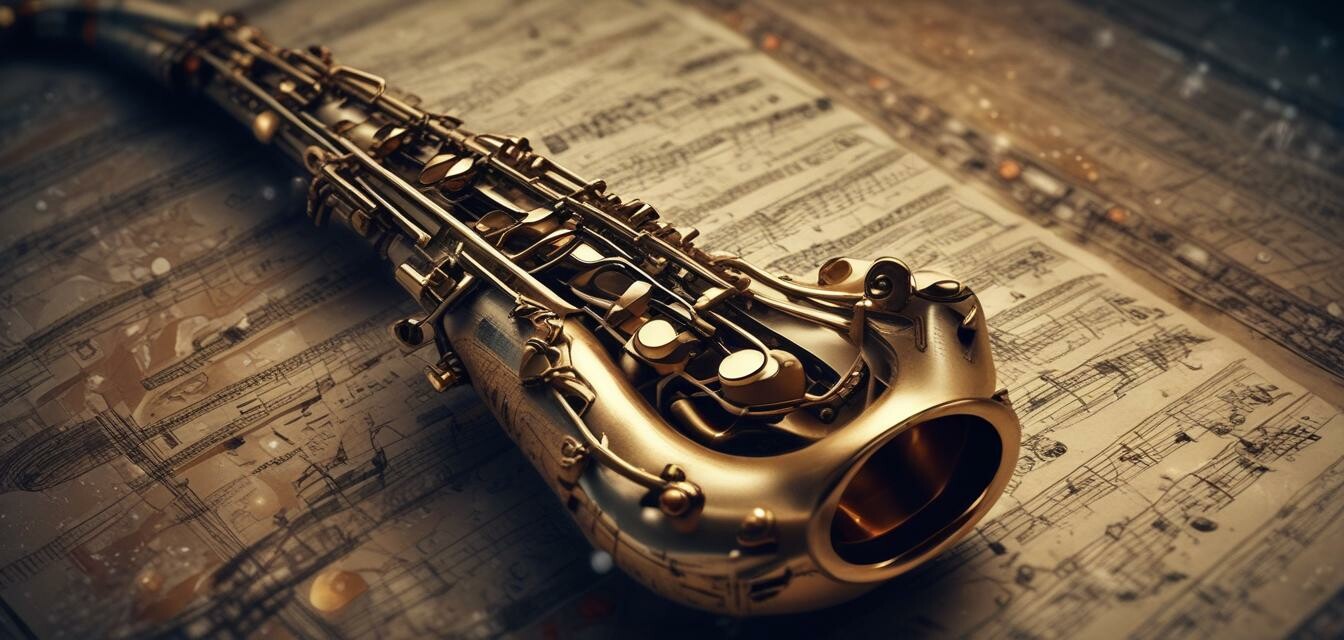
The Evolution of Tenor Saxophone in Popular Culture
Key Takeaways
- The tenor saxophone has played a crucial role in shaping genres such as jazz and rock.
- Its presence has been notable in television and film, influencing public perception of music.
- Major music festivals have embraced the tenor saxophone through live performances, showcasing its versatility.
- Each decade has brought a unique evolution of the tenor saxophone's presence in popular culture.
The tenor saxophone is more than just an instrument; it is a cultural icon that has influenced various music genres and has been depicted in films and television over the decades. Understanding its evolution in popular culture provides insight into how music can bridge generational gaps and unite diverse backgrounds. Let’s explore the dynamic journey of the tenor saxophone through the lens of popular culture.
Historical Overview of the Tenor Saxophone
Invented in 1846 by Adolphe Sax, the tenor saxophone has been a staple in orchestras and bands. Initially embraced by the military bands, it soon traveled into jazz and big band music in the 20th century, establishing itself as a key instrument in these genres.
The Rise of Jazz and the Tenor Saxophone
The 1920s marked the beginning of the jazz era, and with it came the rise of iconic tenor saxophonists. Artists like Coleman Hawkins and Lester Young contributed to the instrument's popularity.
Notable Contributions
| Artist | Era | Contribution |
|---|---|---|
| Coleman Hawkins | 1920s-1930s | Popularized the tenor saxophone in jazz music. |
| Lester Young | 1930s-1940s | Developed a smooth, relaxed style that influenced many. |
| John Coltrane | 1950s-1960s | Innovated modal jazz and expanded the tenor saxophone's possibilities. |
The Tenor Saxophone in Popular Media
Over the decades, the tenor saxophone has made significant appearances in both film and television, becoming synonymous with specific characters and emotions.
Film and TV Appearances
Let's examine some notable examples:
- “The Pink Panther” (1963) - The film’s jazzy theme, featuring miles of saxophone sounds, became iconic.
- “The Last Waltz” (1978) - Showcased legendary performances with prominent tenor saxophonists.
- “The Simpsons” - The character Lisa Simpson is known for her skilled tenor saxophone playing, often contributing to the humor and depth of episodes.
Influence on Modern Music
The tenor saxophone continues to shape modern popular music, being featured in genres such as rock, pop, and hip-hop.
Impactful Modern Artists
| Artist | Genre | Notable Work |
|---|---|---|
| David Bowie | Rock | “Young Americans” featuring sax solos. |
| Lady Gaga | Pop | Incorporation of sax in several tracks. |
| Kendrick Lamar | Hip-Hop | Features unique jazz elements, including saxophone. |
Major Music Festivals and the Tenor Saxophone
Music festivals have embraced the tenor saxophone, showcasing its versatility in live performances across various genres. Popular festivals have transformed into platforms for saxophonists to shine.
Noteworthy Festivals
- Jazz Fest in New Orleans - Celebrates the rich history of jazz, where the tenor saxophone often takes center stage.
- Montreux Jazz Festival - Hosts numerous saxophone performances featuring both prominent and emerging artists.
- Coachella - Diverse music festival where tenor saxophonists collaborate with various artists across different genres.
Conclusion
The tenor saxophone has left an indelible mark on popular culture, continuously evolving from its origins to becoming a beloved instrument across multiple genres. Its poignant sound and versatile usage have made it an enduring symbol within the music industry, ensuring its legacy will live on for years to come. Its impact stretches beyond genres, influencing films, television, and music festivals alike.
Tips for Embracing the Tenor Saxophone
- Explore different genres to discover your unique sound.
- Participate in local jam sessions or music festivals to meet fellow saxophonists.
- Practice regularly to enhance your skills and confidence in playing.
- Stay updated on saxophone music trends to remain relevant in the evolving music scene.
Pros
- Distinct and appealing sound in various musical contexts.
- Versatile across genres - jazz, pop, rock, and more.
- Rich history connecting to influential artists.
Cons
- Can be physically demanding to play for extended periods.
- High-quality instruments can be expensive.
- Requires consistent maintenance to achieve optimal sound.